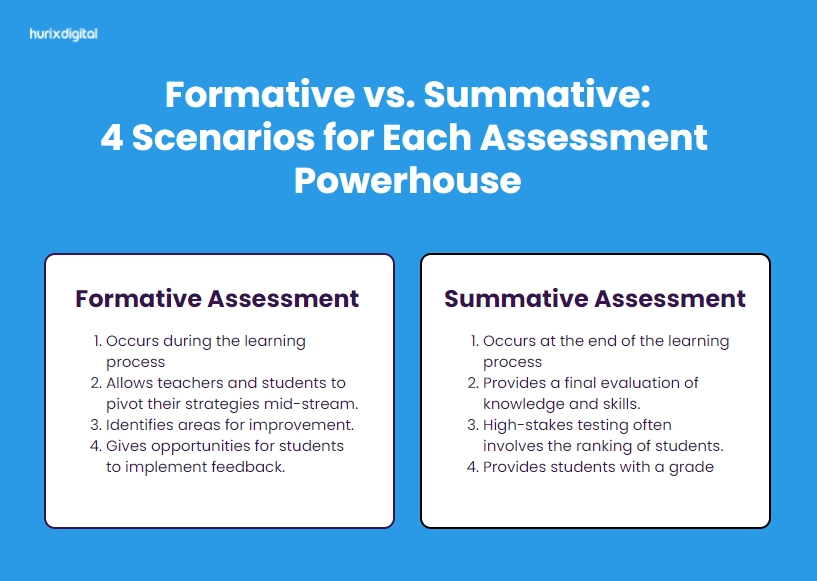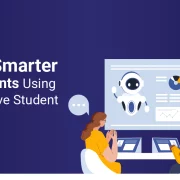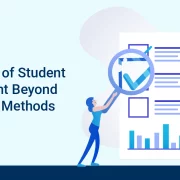Choose assessments strategically! Uncover top scenarios for formative vs. summative assessment. Optimize learning outcomes with precision!
Elevate assessments with Hurix Digital! Strategize with precision for formative and summative success. Optimize learning outcomes. Contact us now to know more!

Understanding Formative vs. Summative Assessments
Assessment is vital in education, guiding both teachers and students in the learning process. Distinguishing between formative and summative assessments is crucial for designing effective evaluation strategies that enhance learning outcomes.
Formative Assessment: Continuous Improvement
Formative assessments occur during the learning process, providing ongoing feedback. This type of assessment helps educators adjust teaching methods based on student needs and progress. Key aspects include:
- Real-Time Feedback: Teachers can assess understanding and offer immediate guidance.
- Student Engagement: Actively involves students in their learning, promoting ownership and motivation.
- Identifying Gaps: Pinpoints specific areas where students may struggle, allowing for targeted interventions.
Research shows that formative assessments can significantly enhance student performance. A study indicated that regular formative feedback can boost achievement by up to 25%.
Summative Assessment: Final Evaluation
In contrast, summative assessments occur at the end of a learning segment, providing a comprehensive evaluation of student knowledge. Important features are:
- High-Stakes Nature: Often determines final grades and can impact students’ future opportunities.
- Standardized Testing: Commonly used to compare performance across different groups or institutions.
- Final Judgement: Offers a clear picture of what students have learned, summarizing their overall grasp of the material.
Standardized tests are frequently used in education systems worldwide to assess proficiency in core subjects, influencing curriculum design and funding.
Balancing Both Assessment Types
Utilizing both formative and summative assessments creates a robust educational framework. By incorporating ongoing feedback while also evaluating final outcomes, educators can:
- Foster a Growth Mindset: Encourage continuous development and resilience among students.
- Enhance Learning Outcomes: Utilize insights from formative assessments to improve summative results.
Conclusion
In conclusion, understanding the differences between formative and summative assessments is essential for effective teaching. Both serve distinct but complementary purposes, ultimately aiming to enhance student learning and achievement. By leveraging each type strategically, educators can create a more effective learning environment.



